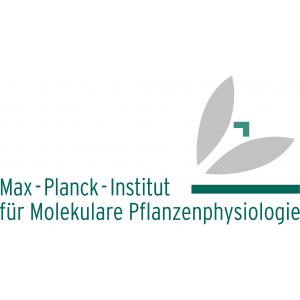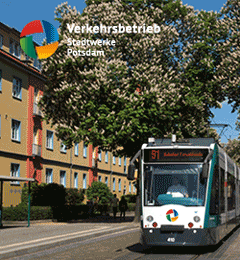Regulation of root growth from afar: How genes from leaf cells affect root growth.
Plants possess diverse and complex communication channels, with good reason. Communication errors or "false news" could in the worst-case result in the plant dying. A team of scientists from the Max Planck Institute of Molecular Plant Physiology, in collaboration with international cooperation partners, has discovered a completely new mechanism of internal communication that is used by plants.
Anyone who believes that plants are organisms "without brains" that lack the ability to perceive and respond to the environment is wrong. Plants exhibit tremendous variety and grow in many different locations, and this requires enormous adaptability. They have an amazing capacity for internal communication, which allows them to coordinate their development and growth. Decisions are needed on whether new leaves should be produced to allow more photosynthesis, or root growth should be increased to provide a larger root surface, occupy more soil and access more water and nutrients, or defense molecules should be produced to combat viruses, bacteria, fungi or other attackers, or whether it is time to flower and set seed. To reach the right decision and coordinate tasks in an error-free manner requires correct recording and registration of environmental signals, production of appropriate internal signals, transport of these signals into the relevant parts of the plant and their subsequent processing, feedback and verification at their site of action. Errors in signal generation and processing or in internal communication can in the worst-case lead to the immediate death of the plant and must be avoided at all costs. Therefore, plants have diverse and complex communication channels.
Scientists from the Max Planck Institute of Molecular Plant Physiology together with colleagues from France, Italy, Hong Kong and China have shown a new way in their current study. They demonstrated that root regulation can be controlled by mobile interpreters with special characteristics.
Communication from the leaf to the root over the sieve tubes
Normally, it is assumed that after a gene is activated, the corresponding protein is produced in the same cell. When a gene is activated, the corresponding DNA sequence is read off - transcribed - to generate a transient RNA copy that acts as an interpreter; the so-called messenger or mRNA. The mRNA moves from the nucleus into the cytoplasm, where it is translated into proteins at the ribosomes. The proteins are the important actors for a living being. Their nature, composition and structure essentially determine the characteristics of an organism and ensure that organisms develop and grow.
However, it has been known some time that in plants mRNA does not necessarily remain in the cells where the gene is read-off, but that it can be transported over long distances to other parts of the plant. Dr. Friedrich Kragler, working group leader at the MPI-MP, could already show in an earlier publication that about 2000 genes produce so-called mobile mRNAs. Transport of these mRNAs takes place in the sieve tubes (phloem) of the plants, in which sugar and other organic materials are transported. So far, little was known about how a mRNA molecule is converted into a mobile transport form. As summarized by Dr. Kragler, "In our current work we have not only been able to demonstrate that certain mRNA molecules are transported from the leaves into the roots to stimulate root growth, but we also uncovered the mechanism responsible for mobilizing the mRNA, and demonstrated that the protein is actually formed at the target site".
How short-distance interpreters are turned into long-distance informants
The mechanism by which the mRNA is turned into a mobile interpreter between leaves and roots involves a chemical modification of one of the basic building blocks in the mRNA. Analogous changes have long been known to occur in DNA, the molecule in which the genetic information is stored. In DNA, such modification allow the inheritance of new properties, without the need for a mutation in the genetic material itself. This mechanism involves the transfer of methyl groups onto the cytosine bases of the DNA. This changes the activity of individual genes or even of whole chromosomes. These changes are called epigenetic effects. As Dr. Kragler explains: "We were able to demonstrate for the first time that cytosine-based methylation also has a function in mRNA. This modification results in certain mRNA molecules produced in leaves being transported via the phloem to the root. These mRNAs are transported to specific root cells and translated into functional proteins. That in turn regulates root growth". The reason for the regulation from a distance is probably that in this way leaf and root growth can be coordinated. If a plant does not have enough roots, the leaves are not supplied with enough nutrients and growth is slowed down. On the other hand, if the plant forms too many roots, then the aboveground plant part receives more nutrients than it needs, but the growth may still be slowed down because too much energy is put into the root growth and too little remains for aboveground growth. Specific regulatory mobile mRNAs could help to ensure that root growth matches the nutritional needs of the leaves, thus making the most efficient use of the energy gained from photosynthesis. In the next step, the scientists will investigate why only certain mobile mRNA molecules are modified.
Original Publication
Lei Yang, Valentina Perrera, Eleftheria Saplaoura, Federico Apelt, Mathieu Bahin, Amira Kramdi, Justyna Olas, Bernd Mueller-Roeber, Ewelina Sokolowska, Wenna Zhang, Runsheng Li, Nicolas Pitzalis, Manfred Heinlein, Shoudong Zhang, Auguste Genovesio, Vincent Colot, and Friedrich Kragler
m5C methylation guides systemic transport of messenger RNA over graft junctions in plants
Current Biology, 18.07.2019, https://doi.org/10.1016/j.cub.2019.06.042
Contact
Dr. Friedrich Kragler
Max-Planck-Institut für Molekulare Pflanzenphysiologie
Tel. 0331/567 8165
Kragler@mpimp-golm.mpg.de
Ursula Ross-Stitt
Leiterin Presse- und Öffentlichkeitsarbeit
Max-Planck-Institut für Molekulare Pflanzenphysiologie
Tel. 0331/567 8310
Ross-stitt@mpimp-golm.mpg.de
http://www.mpimp-golm.mpg.de












